
Manduca rustica, the rustic sphinx, is a moth of the family Sphingidae. The species was first described by Johan Christian Fabricius in 1775.

Cocytius antaeus, the giant sphinx, is a moth of the family Sphingidae. The species was first described by Dru Drury in 1773.

Manduca muscosa, the muscosa sphinx, is a moth of the family Sphingidae.

Manduca occulta, the occult sphinx, is a moth of the family Sphingidae.
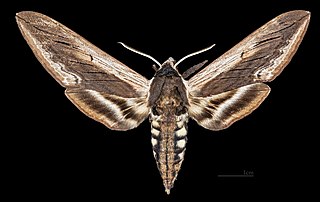
Sphinx drupiferarum, the wild cherry sphinx, is a moth of the family Sphingidae. The species was first described by James Edward Smith in 1797.

Lapara bombycoides, the northern pine sphinx is a moth of the family Sphingidae. The species was first described by Francis Walker in 1856.
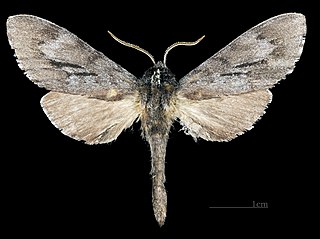
Lapara coniferarum, the southern pine sphinx, is a species of sphinx moth. It was first described by James Edward Smith in 1797. The species is listed as threatened in Connecticut.
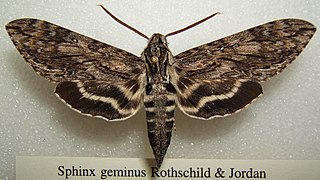
Lintneria geminus, the gemmed sphinx, is a moth of the family Sphingidae. The species was first described by Walter Rothschild and Karl Jordan in 1903. It is found from Mexico to Honduras and Nicaragua with an occasional stray into Texas.
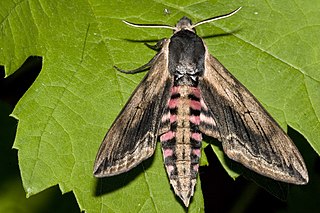
Sphinx ligustri, the privet hawk moth, is a moth found in most of the Palearctic realm. The species was first described by Carl Linnaeus in his 1758 10th edition of Systema Naturae.
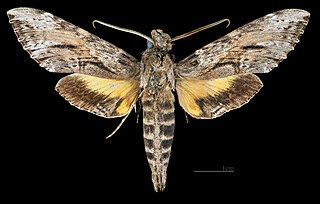
Isognathus rimosa, the rimosus sphinx, is a moth of the family Sphingidae. The species was first described by Augustus Radcliffe Grote in 1865.
Pachysphinx modesta, the modest sphinx or poplar sphinx, is a moth of the family Sphingidae. The species was first described by Thaddeus William Harris in 1839.
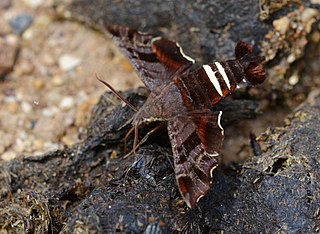
Amphion floridensis, the Nessus sphinx, is a day-flying moth of the family Sphingidae. The species was described by Pieter Cramer in 1777, and renamed in 1920. It is the only member of the genus Amphion erected by Jacob Hübner in 1819. It lives throughout the eastern United States and Canada and occasionally south into Mexico, and is one of the more commonly encountered day-flying moths in the region, easily recognized by the two bright-yellow bands across the abdomen.

Deidamia inscriptum, the lettered sphinx, is a species of moth of the family Sphingidae. It is the only member of the genus Deidamia. The species was first described by Thaddeus William Harris in 1839 and the genus was erected by James Brackenridge Clemens in 1859.

Sphinx gordius, the apple sphinx, is a moth of the family Sphingidae. The species was first described by Pieter Cramer in 1780.

Amphonyx is a genus of hawkmoths in the family Sphingidae erected by Felipe Poey in 1832.

Xylophanes porcus, the porcus sphinx, is a moth of the family Sphingidae. The family was first described by Jacob Hübner in 1823.

Eupyrrhoglossum sagra, the Cuban sphinx, is a moth of the family Sphingidae. The species was first described by Felipe Poey in 1832. It is known from tropical and subtropical lowlands in Cuba and from Mexico and Belize to Guatemala, Costa Rica, Bolivia, Paraguay, Argentina and Uruguay. Occasionally, strays are found in Florida.

Amphonyx rivularis is a moth of the family Sphingidae. It is known from southern Brazil.
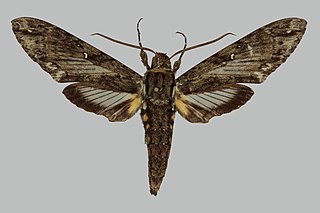
Amphonyx vitrinus is a moth of the family Sphingidae. It is known from Cuba and Hispaniola.

Manduca manducoides is a moth of the family Sphingidae.






















